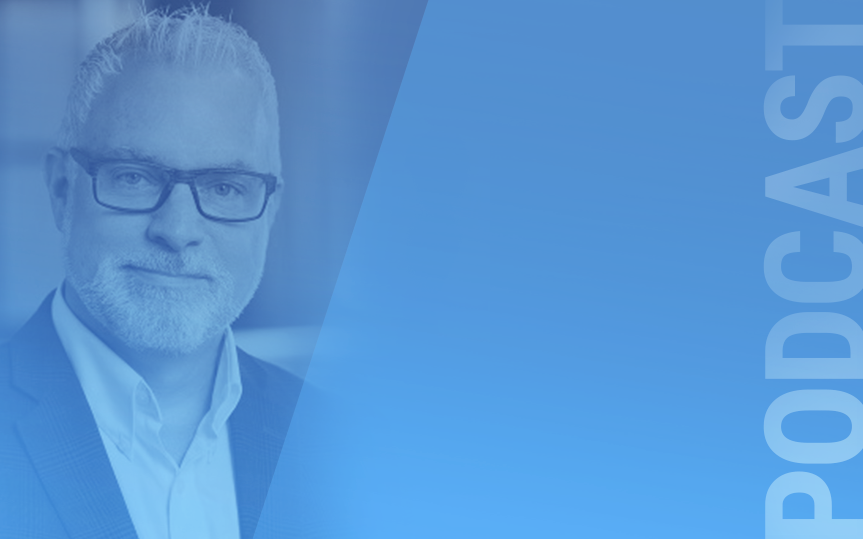Best Practices for Outbound Sales Sequences

Most of us know we should be using outbound sales sequences, but there’s a lot of conflicting information about how to implement cadences in our process. Every sales leader, content creator, and SaaS business seems to have its own idea about best practices.
Darryl Praill is the Chief Revenue Officer at VanillaSoft, the industry’s most established Sales Engagement Platform. Darryl joined the Predictable Revenue podcast to discuss best practices and common mistakes companies make when implementing outbound sales sequences.
Why are sales cadences so important?
The main benefit of using outbound sales sequences is they counteract bad habits salespeople tend to fall into. For example, most reps take an average of 36-63 hours to follow up with a prospect–yet if they were to call within the first few hours, the chances of connecting triple. Sales sequences force reps to follow up within that window.
Similarly, most reps make two or three attempts to engage before giving up on a prospect, but research shows it takes an average of 9-12 touches to connect. Another common problem is that reps will cherry-pick which leads to reaching out to.
Sales sequences eliminate these issues by ensuring that reps follow up a sufficient number of times and don’t let any leads slip through the pipeline. Cadences also help eliminate the admin work of scheduling calls and follow-ups.
All of this results in a higher ROI on marketing efforts, and outbound sales can double or triple their pipeline without any additional investment in staff.
How to build sales cadences for your audience
1. Know your ideal customer profile (ICP)
Before you start writing emails, you need to know who you’re speaking to. Start with identifying your ICP and the different personas within that. Know your buying committee, which may include everyone from executives to reps, and personalize your message to each persona.
For a sales cadence to convert, you need to understand your ICP on a deeper level. What are their pain points and what do they care about? Focus on how you can help them, rather than just stating the features of your product.
2. Keep it short and sweet
“The purpose of a meeting is to book another meeting,” Darryl says. Stop trying to run through the entire buyer’s journey in one email.
There are lots of formulas out there to help you stay on track. The goal of your first few touches shouldn’t be to bombard the prospect with information or book a meeting but only to entice them enough to respond.
For example, try the TTTT formula: trigger, third party, tell and teach:
- Trigger: [prospect name], are you struggling to hit your numbers these days?
- Third-party: I know when I talked to companies A, B, and C, they needed to increase their deal flow by 30%
- Tell: This is what we do for our clients
- Teach: I can show you how if you’d like, just let me know
Keep in mind these formulas should be used as frameworks, not templates. Every email or message should be personalized to the prospect.
How to test your sales sequences
The next step after writing your sales cadence is to test it. Marketers have been performing A/B tests for years, and it’s time for sales to catch up. Here are a few different areas to test:
- Which sales cadence performs better, A or B
- Which type of touch performs best (emails, calls, etc.)
- Which subject lines have a higher open rate
Try out a few different versions of your sales sequences to see which gets the best response, but always make sure to incorporate multiple channels. If your ICP is under 30, you may assume they only use email and never answer the phone–but some prospects may appreciate a follow-up phone call. Try different things and see what works

Put yourself in your prospect’s shoes
To fully optimize your sales sequence, you need to consider the process from your buyer’s point of view. If an unknown name pops up in their inbox, what’s the first thing they’ll do?
Most prospects will go straight to LinkedIn to check out that person’s credentials. They’ll look to see how many connections the rep has, if they post any original content, or if they’re even a real person.
If the rep has a few shared connections and posts original, thought-provoking content, the prospect will likely be intrigued enough to begin a conversation. But if the profile doesn’t have original content or many connections, the rep could be dismissed as a bot.
This is why it’s so important to optimize your social presence. If you need help with this, check out our webinar with Cynthia Barnes on creating a LinkedIn profile that attracts, markets and sells for you.
Writing sales sequences that convert
The first point of engagement your prospect will have with an email is the subject line, and there are a few best practices to keep in mind here. Ideally, your subject lines should be no more than 5 words, and provocative enough that they entice the prospect to click. The only goal of a subject is to intrigue them enough to open the full email.
On the other hand, make sure you don’t fall into cheap tricks like starting with “Re:” to indicate a previous conversation. Your prospects won’t appreciate being duped.
When it comes to a call to action, be as clear as possible but don’t rush into booking a meeting. For your first few touches, try something simple like, “I’ll be reaching out again soon”. Then spend the next few emails building rapport; you might invite the prospect to attend an upcoming webinar or invite them to check out a recent piece of content.
If you choose to share content with the prospect, make sure you don’t provide it in the email directly but instead ask to confirm their interest. This encourages them to reply and engage.
No matter how you choose to nurture leads, don’t start your sales sequence with a meeting request. Always provide value and build a relationship first.
When it comes time to book a meeting, don’t just send a scheduler link. Instead, send a few specific times and ask what works best for them. This small gesture shows you respect their time and are willing to work around their schedule.
Final thoughts on building sales sequences
Writing your sales cadences can be a time-consuming process. These best practices should help you build a cadence that connects with prospects, fills your pipeline, and converts leads into customers.
Unsure of the effectiveness your sales sequences have, or doubting if they could be converting more? We can help you build them step by step, catering to your industry and services. Book a free discovery call to learn more! Our coaches have helped thousands of organizations build, test, and optimize successful sales sequences.
NO TIME TO READ?
Listen On:
The tips in this book will help you navigate a better outbound process, one that focuses on human connection over quotas. Because ironically, focusing on your prospect instead of the sale will make you a more successful sales rep.


